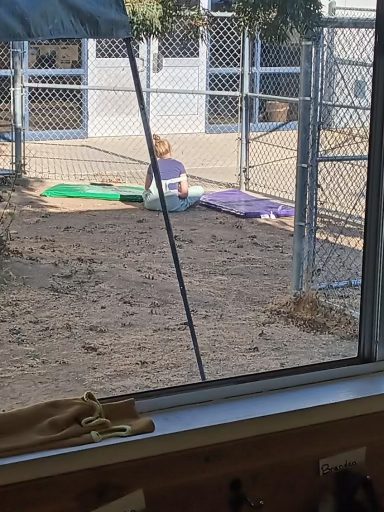When it comes to the Santa Clara County Office of Education’s performance, parents, teachers and residents are giving it a failing grade.
County education officials received all Fs on a report card drafted by the Association of County Educators and SEIU Local 521 earlier this month—and it’s meant to sound the alarm. This move stems from concerns over whether the county is properly utilizing an excess $85 million to address education issues and invest in students. The county’s education board focuses on providing education and services to those who are moderately to severely disabled.
“This is not just a critique but a call to action,” Riju Krishna, teacher at Opportunity Youth Academy, told San José Spotlight. “The fundamental problem is money is not going where it should. There’s a lack of accountability and transparency, and there’s a fundamental denial of the existence of issues.”
Kelly Wylie, an office of education spokesperson, said there is $50.6 million in restricted funding earmarked for specific purposes and $49.2 million earmarked for designated purposes for the 2023-24 fiscal year.
“All funds are allocated for specified or designated purposes with no reserves available that are unused,” she told San José Spotlight.
This is the first time a report card like this has been issued. It is split into three “subjects” that represent each of the county’s education goals: improving access to inclusive, equitable, high-quality education; providing quality support to districts, schools, students and communities; and being a premier service organization. Each section has between three to four examples of where the county is doing well, and more than double the number of suggestions to improve conditions.
As the county office of education and its school districts continue to deal with low teacher recruitment, substitute teacher shortages and upticks in student behavioral issues, special education employees, known as paraeducators, are working alongside students with moderate to severe disabilities. These students often need more support as paraeducators simultaneously teach and help students take care of basic needs like eating. But the worker pool has yet to recover from COVID-19 pandemic layoffs. In addition, infrastructure is crumbling and there aren’t enough special education programs to meet the demand, educators said.
Krishna said she has been trying to get the county to address infrastructure and staffing problems for nearly two years. Each time she has brought up issues, leaders have told her “we are doing everything we can and should.”
“That essentially means they are doing nothing,” Krishna said.
She said it took the county more than a year to make a bathroom compliant with the Americans with Disabilities Act, which had significant impacts on students in wheelchairs. Krishna shared pictures from Martin Murphy Middle School where there was garbage and glass on the floor. Other sites, Krishna said, are also not up to standard, with the county’s most vulnerable students playing in dirt fields surrounded by a metal fence.

Andrea Hightower, a parent who has a severely autistic, nonverbal child in the middle school, shared a photo of her 13-year-old daughter in a fenced off dirt corner of the campus, given only two mats to entertain herself.
“This picture confirms what I wish wasn’t true. (The county) forced the most severely disabled kids onto the districts’ campuses, then segregated them behind cage like fences in unsafe settings and called this inclusion,” Hightower told San José Spotlight. “(Office of education) administration has given up on our most vulnerable kids.”
Sarah Gianocaro, SEIU 521 chapter president and occupational therapist with the office of education, said the majority of problems could be solved if the county just used the excess dollars in reserve. One example she gave is to use $6 million to give paraeducators raises to retain employees.
Gianocaro said dollars could be used to open more special education locations around the county, offering more full day programs where parents could leave their preschool-aged children for more than six hours.
“My husband and I are cooking meals for students in another program because they don’t have hot food at school,” Gianocaro told San José Spotlight. “We’ve been trying to fix it for a year and (the county) keeps telling us that it’s going to happen, but in the meantime, kids are going hungry.”
Gianocaro said the county is going to have to give back millions of dollars in grants because it didn’t meet the requirement in the number of students being served.
The county office of education did not address this issue, but is asking the federal government if it can rollover $18.6 million in grant funding to the 2023-24 fiscal year for program improvements, Wiley said.
Contact Jana at [email protected] or follow @Jana_Kadah on X, formerly known as Twitter.



Leave a Reply
You must be logged in to post a comment.